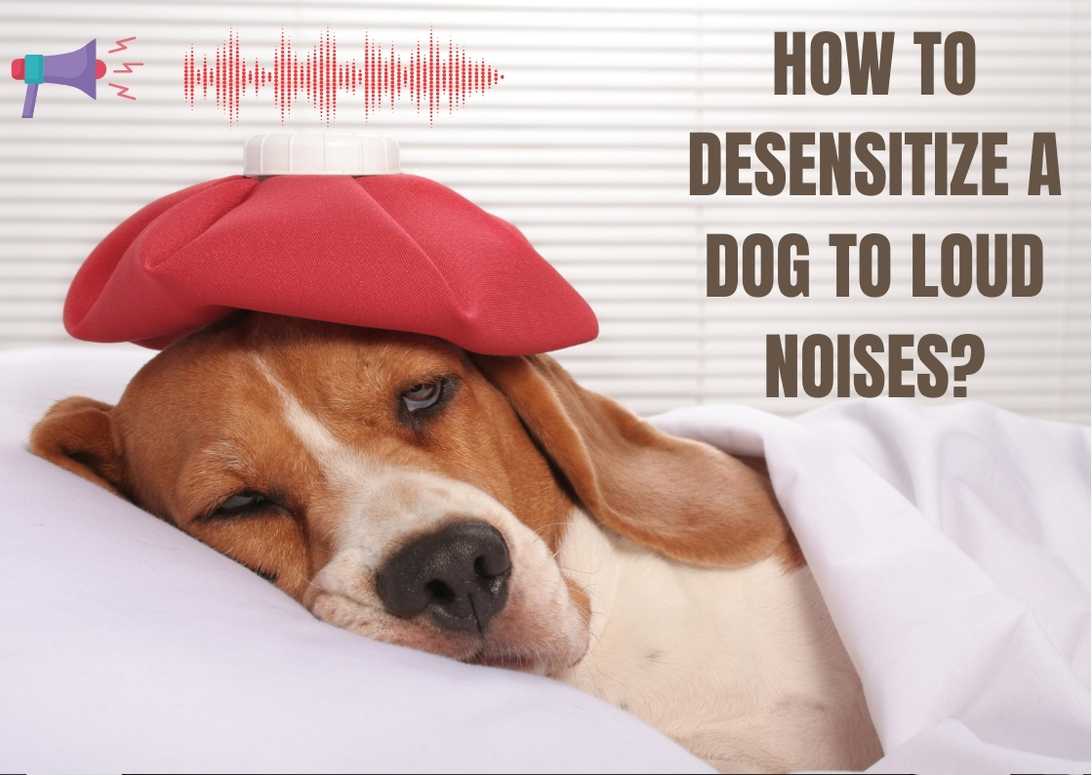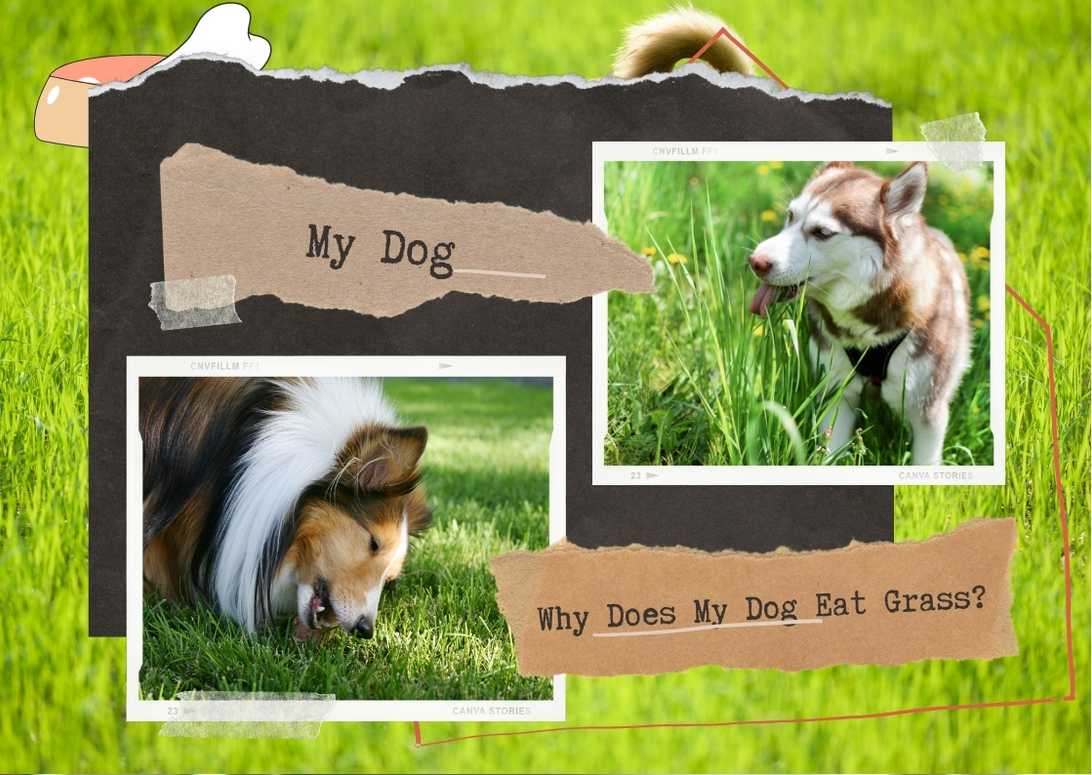How To Desensitize A Dog To Loud Noises?
Hey there, fellow dog lovers! If you’ve ever seen your furry friend trembling or hiding under the bed at the sound of thunder or fireworks, then you know just how distressing loud noises can be for our canine companions.
But fear not! In this article, I’m going to share with you a simple and effective method on how to desensitize your dog to those scary sounds, helping them stay calm and composed in any noisy situation.
Now, you might be wondering why loud noises affect dogs so much more than they do us humans. Well, it all comes down to their superpower-like hearing abilities. Dogs can pick up sounds that are beyond our range of perception and even detect subtle changes in frequency.
As a result, loud noises can startle and overwhelm them, triggering anxiety or fear responses. However, by gradually exposing them to these sounds in a controlled manner and rewarding positive behavior along the way, we can help our four-legged pals build resilience and become less reactive when faced with noise-induced stress.
So let’s dive into the step-by-step process of desensitizing your dog to loud noises – trust me, it’s easier than teaching an old dog new tricks!
Important Points
- Gradual exposure to loud noises can help dogs build resilience and become less reactive.
- Sound desensitization training is effective in desensitizing dogs to loud noises.
- Positive reinforcement, such as treats or praise, can reinforce calm behavior during loud noises.
- Creating a safe space, free from loud noises, is important for dogs to retreat to.
Why Loud Noises Affect Dogs
Dogs’ ears are incredibly sensitive, allowing them to hear even the faintest of sounds. This is why loud noises can have such a profound impact on them. The effects of loud noises on dogs can range from mild discomfort to extreme anxiety.
Some common signs of noise anxiety in dogs include trembling, panting excessively, trying to hide or escape, pacing back and forth, and excessive barking or howling. It’s important for dog owners to understand the impact that loud noises can have on their furry companions and take proactive steps to help desensitize them.
One effective strategy for desensitizing dogs to loud noises is through sound desensitization training. This involves gradually exposing your dog to increasingly louder sounds while creating a calm and safe environment for them. By introducing these sounds in a controlled manner, you can help your dog become more comfortable and less reactive over time. It’s crucial to start with low volume levels and slowly increase the intensity as your dog becomes more tolerant.
Additionally, providing positive reinforcement such as treats or praise during this process can further reinforce calm behavior during loud noises.
By understanding the effects of loud noises on dogs and implementing sound desensitization techniques, we can help our four-legged friends overcome their anxiety and fear. Creating a calm environment during loud noises is essential for their well-being and overall happiness. Gradual exposure to noise allows dogs to build resilience and develop coping mechanisms when faced with challenging auditory stimuli without overwhelming them right away.
Gradual Exposure to Noise
Gradually introducing your furry companion to increasing levels of sound can help them develop a greater tolerance and calmness in the face of auditory stimuli. This desensitization process is especially beneficial for dogs with noise sensitivity, as it allows them to become more comfortable with loud noises over time. By implementing calming techniques during this process, such as providing a safe and quiet space for your dog or using relaxation exercises, you can help alleviate their fearful reactions to loud noises.
During the desensitization process, it is important to start with low levels of noise that barely elicit a response from your dog. Then, gradually increase the volume very slowly, paying close attention to their behavior and body language. Taking note of any signs of fear or discomfort will help you determine when to pause or decrease the volume.
Additionally, incorporating positive reinforcement techniques like treats or praise when your dog remains calm can further reinforce their ability to handle louder sounds. By following these steps, you can effectively manage noise phobia and set the stage for successful positive reinforcement training in the subsequent section.
Transition: As we establish a foundation of desensitization through gradual exposure to noise, we can now move on to utilizing positive reinforcement training methods to further strengthen our dog’s resilience in facing loud noises without fear.
Positive Reinforcement Training
Using positive reinforcement training methods can significantly enhance a dog’s ability to remain calm and composed in the face of auditory stimuli. Studies have shown that dogs who receive consistent rewards for their calm behavior have a higher success rate in overcoming noise sensitivity. One effective technique is clicker training, where the sound of a clicker is associated with treats and rewards. By gradually introducing the noise at a low volume and clicking immediately after, the dog learns to associate the click with something positive.
Treat rewards can also be used during desensitization exercises, where the dog is rewarded for remaining calm while being exposed to increasing levels of noise. This helps reinforce their calm behavior and builds their confidence in handling loud noises.
In addition to clicker training and treat rewards, behavior modification techniques such as counterconditioning can be employed. Counterconditioning involves pairing loud noises with something enjoyable or relaxing for the dog, such as playtime or massage. This helps create positive associations with loud sounds, reducing fear or anxiety responses over time. Calming supplements may also be considered as part of a comprehensive approach to desensitizing a dog to loud noises, as they can help promote relaxation and reduce stress levels.
Transition: Now that we have discussed how positive reinforcement training methods can assist in desensitizing dogs to loud noises, let’s move on to creating a safe space for them to retreat when they feel overwhelmed by auditory stimuli without being explicitly told what steps are involved.
Creating a Safe Space
When you provide a comforting sanctuary, your furry friend can find solace and peace during overwhelming sound experiences. Calming techniques such as creating a quiet environment and using noise-canceling products can help create a safe space for your dog.
Start by finding a quiet room in your house where you can set up your dog’s bed or crate. Make sure the room is free from any loud noises or distractions that could trigger anxiety. You can also use white noise machines or calming music to drown out external sounds.
Building trust and confidence is crucial when desensitizing your dog to loud noises. Spend time bonding with your dog in their safe space, engaging in activities they enjoy such as playing or training sessions. Gradually introduce them to the source of the noise at a low volume while providing treats and praise for calm behavior. As their confidence grows, slowly increase the volume over time. Implementing a desensitization plan with gradual exposure to louder noises will help them become more resilient.
By creating a safe space and implementing these calming techniques, you’re setting the foundation for successfully desensitizing your dog to loud noises. Now, let’s move on to the next step: using sound masking techniques to further aid in their relaxation and comfort during noisy situations without causing undue stress or fear.
Using Sound Masking
Incorporate the soothing sounds of gentle melodies to envelop your furry friend in a cocoon of tranquility, enhancing their relaxation and sense of security. Sound masking is one of the soundproofing techniques that can be used to create a safe space for your dog during loud noises. White noise machines or calming music can help drown out sudden bursts of sound and provide a constant, comforting background noise.
You can play these sounds at a low volume initially and gradually increase it over time as part of your desensitization plan. There are also specific desensitization tools available that are designed to expose your dog to various loud noises in a controlled manner. These tools may include recordings or simulations of thunderstorms, fireworks, or other loud sounds. By using these tools in conjunction with the calming music or white noise machines, you can slowly acclimate your dog to the noises they find distressing.
Transitioning into seeking professional help doesn’t have to be daunting, and it can provide additional support and guidance for you and your pet.
Seeking Professional Help
If you’re feeling overwhelmed or unsure about how to help your furry friend through their fear of loud sounds, seeking professional help can provide invaluable support and guidance. Professional guidance can offer you a range of options for behavior modification and anxiety management that are tailored specifically to your dog’s needs.
A professional assessment will allow them to identify the root cause of your dog’s fear and develop a personalized plan for desensitization. They have specialized techniques and tools at their disposal that may not be available to the average pet owner, making them well-equipped to address your dog’s specific needs.
Working with a professional can also give you peace of mind knowing that you’re on the right track and maximizing your efforts. They can guide you through each step of the process, ensuring consistency and patience in your approach. By following their recommendations and staying committed to the desensitization program, you can gradually help your dog overcome their fear of loud noises.
With their expertise and support, you’ll feel more confident in helping your furry friend navigate through their fears without feeling overwhelmed or uncertain.
Transition: Moving forward with consistency and patience is key in successfully desensitizing our dogs to loud noises…
Consistency and Patience
Stay committed and patient as you work towards helping your furry companion overcome their fear of loud sounds. When it comes to desensitizing a dog to loud noises, consistency is key. It’s important to stick with a training routine and not give up, even if progress seems slow at times.
Consistency means using the same training techniques each time, so your dog can become familiar with them and start associating them with positive experiences. This could include gradually exposing your dog to louder noises over time or using behavior modification techniques to help them feel more comfortable.
Another important aspect of desensitization is patience. Dogs with noise sensitivity may take longer to overcome their fears compared to others. It’s crucial to be patient and understand that every dog is unique in their own way. Rushing the process or expecting immediate results can cause setbacks in the desensitization process.
Take small steps and celebrate even the smallest victories along the way. In addition to consistency and patience, it’s helpful to incorporate calming techniques during the desensitization process. This could involve creating a safe space for your dog where they feel secure during noisy situations, such as using a crate or designated area with their favorite toys or blankets. Calming exercises like deep breathing or massage can also aid in reducing anxiety levels.
Overall, desensitizing a dog to loud noises requires dedication and understanding of their individual needs. By staying consistent, being patient, and incorporating calming techniques, you can help your furry friend build confidence and overcome their fear of loud sounds over time. It’s important to remember that desensitization is a gradual process, and it may take time for your dog to fully overcome their anxiety.
Frequently Asked Questions
Can desensitization training be effective for dogs with severe noise phobias?
Yes, desensitization training can be effective for dogs with severe noise phobias. Its success rate may vary, but alternative methods and professional guidance can enhance effectiveness. Case studies have shown positive results when using this approach.
How long does it usually take for a dog to show progress in sound desensitization training?
The progress duration of sound desensitization training can vary depending on the dog and their individual needs. Common challenges may arise, but with positive reinforcement and gradual exposure techniques, progress can be seen over time.
Are there any specific breeds that are more prone to noise sensitivity?
Some specific breeds, such as Border Collies and German Shepherds, are more prone to noise sensitivity. The effectiveness of training and progress timeline may vary depending on the individual dog. Noise sensitivity can lead to anxiety-related behaviors.
Can desensitization training help with other anxiety-related behaviors in dogs?
Desensitization training is a powerful tool that can work wonders for various anxiety-related behaviors in dogs. It can be used to tackle separation anxiety, fear of strangers, fear of other dogs, fear of car rides, and even the fear of being alone.
Are there any potential risks or side effects of sound desensitization training for dogs?
There are potential risks and side effects of sound desensitization training for dogs. It’s important to monitor your dog’s response and proceed at a pace that is comfortable for them. The effectiveness and progress time may vary depending on the individual dog and their breed susceptibility.
Conclusion
In conclusion, desensitizing a dog to loud noises is a gradual process that requires patience and consistency. By exposing them to increasing levels of noise and providing positive reinforcement, we can help our furry friends stay calm in the face of thunderstorms, fireworks, or other loud sounds.
It’s important to create a safe space for them where they feel secure and protected, while also using sound masking techniques such as white noise machines or calming music.
Seeking professional help from a qualified dog trainer or behaviorist can also be beneficial in this process, especially if your dog has severe anxiety or fear issues related to loud noises. They can provide specialized guidance and support tailored to your dog’s specific needs.
Remember that every dog is unique and may require different approaches, so it’s essential to be patient and adjust the training accordingly.
One interesting statistic is that approximately 40% of dogs experience some level of noise sensitivity or phobia, according to a study conducted by the University of Bristol. This highlights the significance of addressing this issue and ensuring our dogs’ well-being during noisy situations.
With consistent training and positive reinforcement, we can help our canine companions overcome their fears and live happier, more relaxed lives. So let’s start desensitizing our dogs today and watch them conquer their fear one decibel at a time!








